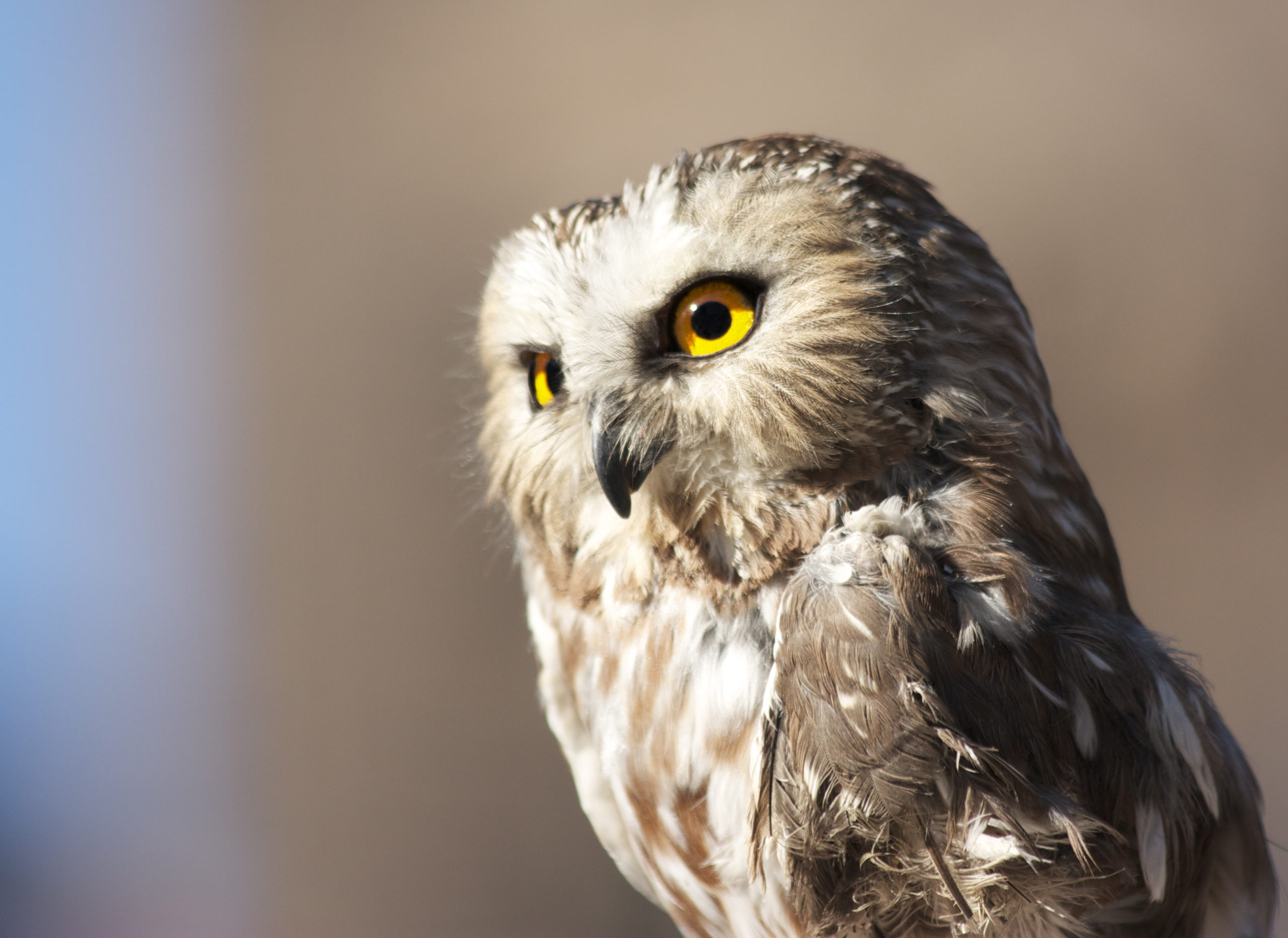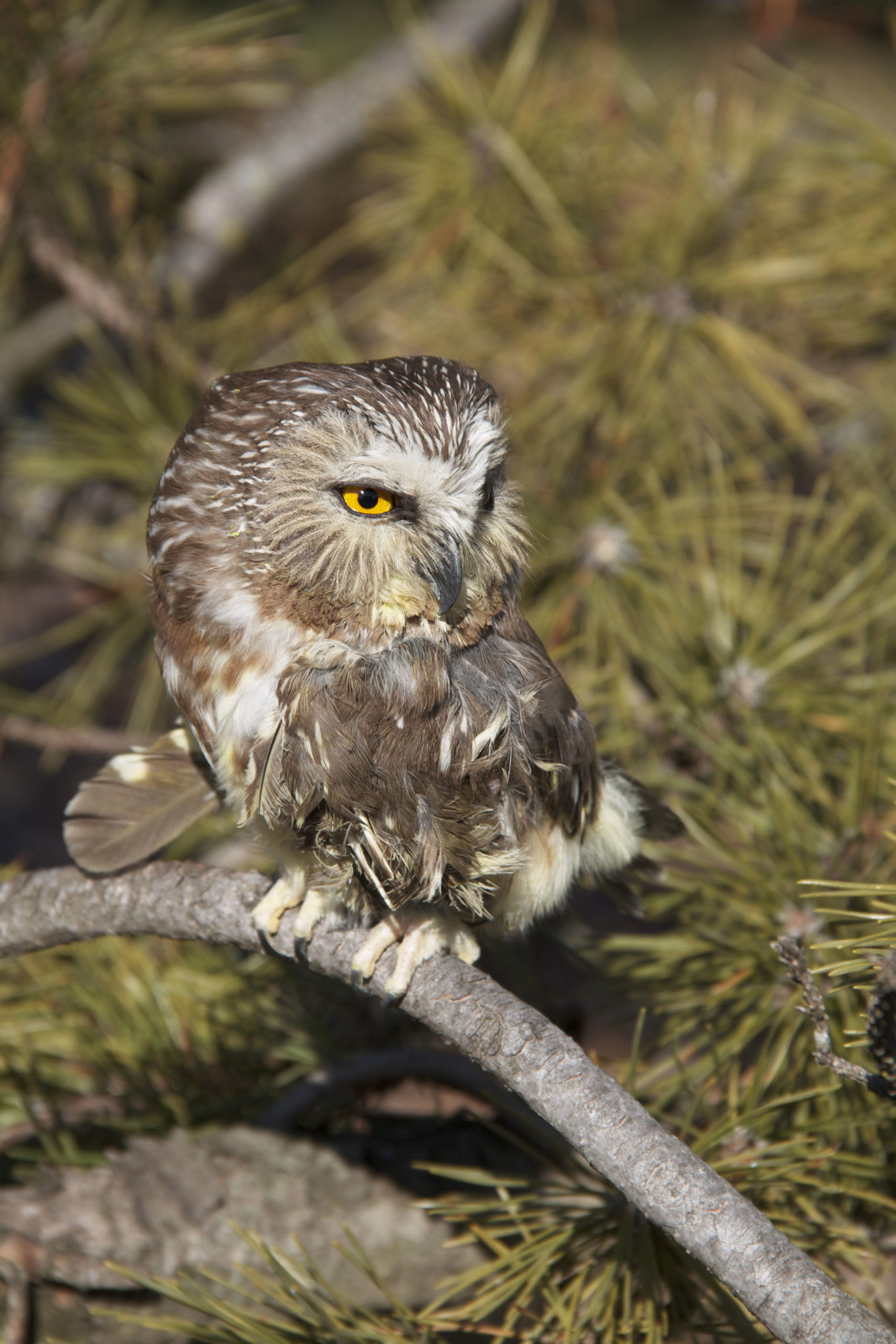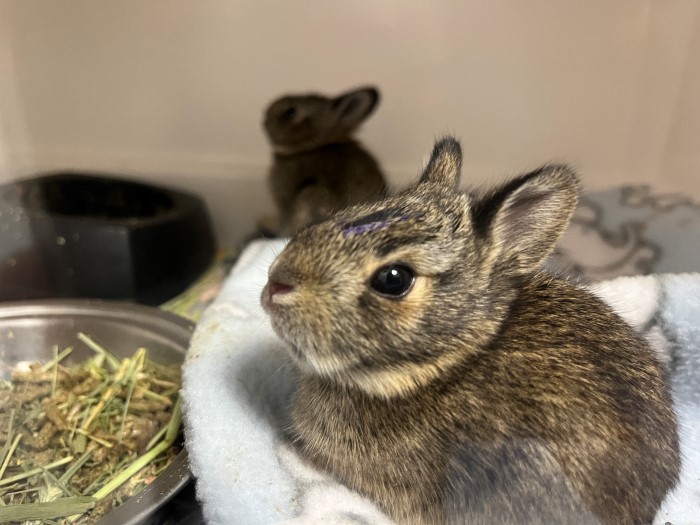
Northern saw-whet owls are small but tough owls that live in Illinois. They’re brown, white, and tan, and are about the size of a robin. Like many owls, they are rarely spotted by the casual observer, as they spend most of their days hidden. Let’s follow a male saw-whet owl and his family through the day.
- 3 pm – While many of us are getting home from work or school, saw-whet owls are still hiding in their trees. These owls are known to nest in forests, but they take advantage of whatever their surroundings are. Some Northern saw-whet owls can live near the coast of lakes and rivers too. Their preferred nest would be a hole in a tree hidden behind branches and leaves. This male owl has a family; his mate has just laid 5 eggs!
- 10 pm – Northern saw-whet owls are up and about at this time. We are likely to find our guy perching on a low branch, waiting for the perfect meal to wander by. Since the males hunt while their mate incubates eggs, this owl is working hard to bring home food. Although small and deceptively cute, these owls are exceptional hunters. Their favorite foods are wild mice, voles, and, on occasion, insects! Even though we might think of wild mice as pests, many different types of owls rely on them to feed themselves and their families. The use of rodenticides (agents that poison rodents such as mice or rats) can poison and even kill animals that eat mice, like owls.
- 1 am – Northern saw-whet owls are tough, but there are predators all around! Larger birds of prey hunt the Northern saw-whet owl as he hunts for his own food. This owl would stay alert while hunting throughout the night to make sure that he doesn’t become someone else’s snack.
- 4 am – As people start to wake up, our owl is faced with yet another challenge: cars. Sometimes raptors get focused on their prey and make mistakes, such as putting themselves in the path of a car or running headfirst into a window. If you find a bird you think may be injured, please do your best to safely bring them into the Wildlife Medical Clinic or to a licensed wildlife rehabilitator.
- 10 am – Our owl is now hidden well behind some foliage, getting some well-earned rest after a long night of hunting. Northern saw-whet owls camouflage with their surroundings so well, people may not know they are there.

Thanks for taking a brief journey through the life of a Northern saw-whet owl! Respecting the environment is important, as these owls rely on their environment for food and shelter. Forests are a habitat for critters like voles and mice, which are important food sources for owls and their young. Abundant trees also give Northern saw-whet owls plenty of places to hide from predators. If you’d like to know what you can do to help protect these owls and other wildlife, please consult the “Living with Wildlife in Illinois” website (https://extension.illinois.edu/wildlife/prevent.cfm). And of course, if you’re ever concerned about injured wildlife, don’t hesitate to contact the Wildlife Medical Clinic.
Special recognition to the Cornell All About Birds – Northern Saw-whet Owl website, a great source used for information on Saw-whet Owls in this article. (https://www.allaboutbirds.org/guide/Northern_Saw-whet_Owl/id)



